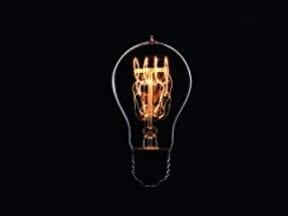Anyone who has purchased used books on Amazon likely encountered Thrift Books. It launched in 2003 as a pure-play Amazon seller. Now, with its own website and sales in other channels, annual revenue has grown to $150 million. It’s the largest used-book seller in the world.
Thrift Books’ CEO, Mike Ward, has been with the company since inception. I recently spoke with him about the business, the industry, and the logistics of selling tens of millions of books every year.
What follows is the audio of our entire conversation and a transcript, edited for length and clarity.
Practical Ecommerce: Tell us about Thrift Books.
Mike Ward: Many people have purchased a book from us on Amazon and didn’t realize where it came from. We believe we’re the largest online seller of used books in the world.
We’re headquartered in Seattle. We have eight fulfillment centers in the U.S. We employ about 900 folks, and we have annual revenue of around $150 million. We were founded back in 2003 — literally in the founder’s living room. An opportunity had arisen then, which was Amazon opening up its APIs to third-party sellers like us.
PEC: Was your vision at the time to sell only used books?
Ward: No. One of the founders worked at a large thrift store in the Seattle area. He had access to used books. That was the genesis of the idea. As we grew, we decided to stay focused on books. We’ve become quite good it over the years. But early on it was happenstance.
PEC: Revenue of $150 million per year is staggering. That’s something like 25 million individual titles per year. Is that correct?
Ward: Yes. We are anticipating this year to sell about 25 million units. And yes, that’s a staggering number.
PEC: Where do you find 25 million books per year to sell?
Ward: We buy them from our thrift store partners, primarily. We also have some partnerships with libraries, where we take some of their out-of-circulation items. For the most part, we’re partnering with charities and thrift stores such as Goodwill and Salvation Army. Goodwill, for example, takes donated books, stacks them up, and places them in really big boxes — five feet by five feet by five palletized boxes that go a semi-trucks. We buy those pallets by the pound from those thrift stores. Then, we bring those trucks into our facilities where the books are processed to determine which are saleable.
Our employees grade them carefully so that shoppers know the quality of each book. There are a lot of books that come in that are not in a saleable condition. To sell 25 million books a year, we purchase millions of pounds of books every year — we will buy maybe 300 million pounds of books this year.
PEC: Are the books mainly fiction, nonfiction, or a mixture?
Ward: It’s a mix. In Silicon Valley, we’ll receive a decent supply of computer programming books and similar. Seattle supplies many high-quality books. A lot of fiction comes out of there. The book that we’ve seen the most of since January 2018 is “The Da Vinci Code.” We’ve seen 147,000 copies of that book. Next on the list is “Twilight,” at roughly 138,000 copies. “Dr. Atkins’ New Diet Revolution” is tenth on the list.
PEC: How do you decide if you’re going to try to sell a book?
Ward: There are two parts to that. One is how do you decide to sell it? The other part is at what price? So both of those are heavy technology problems. At entry, when we’re bringing the book into inventory, we’re going to scan the ISBN of every single book that’s in a saleable condition. We use algorithms that are constantly learning, improving, and self-correcting. The algorithms look at the sales history for each item and then predict the demand.
PEC: Did Thrift Books develop those algorithms in-house?
Ward: Yes. I don’t know of any off-the-shelf software that creates an algorithm for deciding what to list, what not to list, what to keep, what not to keep, what to put for sale, and what not to. When we started the business, we had no algorithm at all. We trusted the marketplace, which at the time was just Amazon.
Over time, we began to get smarter about that and started to use algorithms. The other side of it is after a book is listed. We update the price dynamically all the time. There is off-the-shelf software that does that, but we think our algorithm is better and probably quite a bit faster. But it took years to develop.
PEC: Thrift Books launched on Amazon. But now you have your own ecommerce site, which, as I understand it, accounts for more sales than Amazon. How did you do that?
Ward: A lot of effort over a lot of time! When we first created our website, we were happy when the first sale came in. We were happy to have 4 to 5 percent of our sales there. In the last five years, we’ve grown our website from 10 percent of overall sales to well above 50 percent today. The best advice I could give to your readers is to understand the marketplaces that you sell on very, very well. Understand the exact profit you’re receiving from the items you sell there.
Take a hard look and make a hard decision about what you want to list. Amazon has made it clear that it’s more interested in higher-priced items. Amazon’s commission structure confirms this. If you’re selling a high-priced item on Amazon, fees may be 15 to 20 percent of the price. For low-priced items, it could be 50 percent. So, rank all of the SKUs in terms of the profit. Then make a hard decision. Is it worth continuing to list on each marketplace?
Building up a website takes time. You cannot do it overnight. It took us five years to get to the size that we are at now. It requires investment and patience.
PEC: Over those five years, how were you able to communicate to folks on Amazon to go to ThriftBooks.com, instead?
Ward: We took a traditional approach to build sales to our website. We purchased advertising on the usual suspects, such as Google. But we were very careful not to overspend those advertising dollars.
PEC: Is your website a custom ecommerce platform?
Ward: Yes. We use Microsoft’s technology — Microsoft’s SQL server and Microsoft code base. We’re fully integrated with Microsoft’s technology stack. But the code is all written in-house. We don’t use any of the bigger website platforms. Ours is built from scratch on Microsoft technology.
PEC: Your company sells books. But, beyond books, you’re also a savvy ecommerce merchant. Our readers are merchants, too. Any words of wisdom for them?
Ward: Just keep going, be very smart, and rely on the data. I remember the days at Thrift Books of taking items to the Post Office. I’ve been there. The way we succeeded was by relying on data and technology. At its core, online retail is a technology business no matter what you’re selling. It’s getting bigger every year. There’s room to grow.




